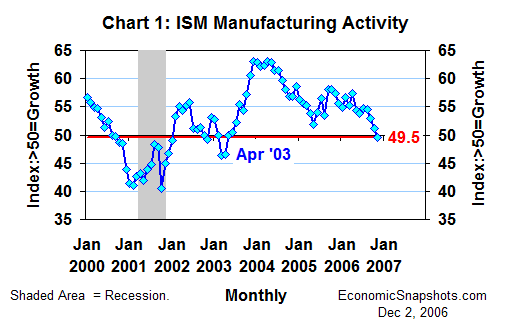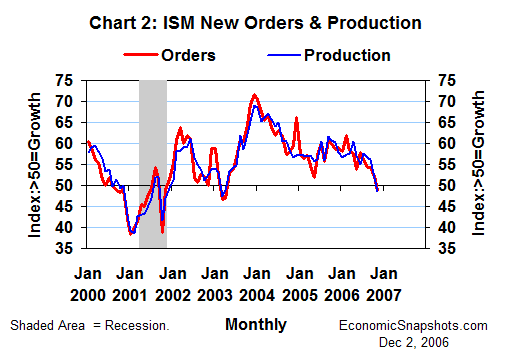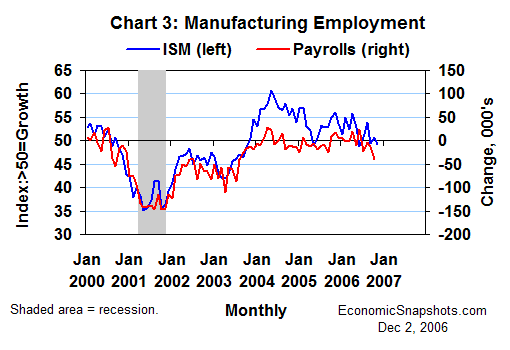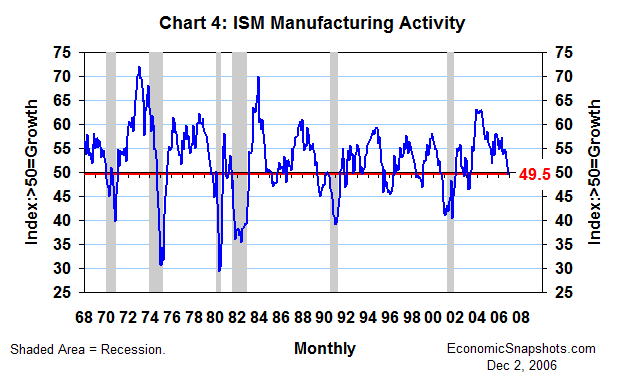
| Back to Index |
December 2, 2006 – In yesterday’s, data, the ISM diffusion index of U.S. manufacturing activity fell by 1.7 index points to 49.5 in November – indicating a small decline in manufacturing activity (Chart 1).

This index has fallen steadily for the last four months. However, November marked its first negative-growth reading (an index level below 50) since April 2003.
Within the ISM survey detail, both new orders and production crossed from positive to negative ground in November. The ISM new order index fell by 3.4 index points to 48.7, and the production index fell by 3.4 index points to 48.5 (Chart 2). Like the overall index, these were the first negative readings for both of these indices since April 2003.

The ISM employment index fell by 1.6 index points to 49.2 in November (Chart 3). This index has been alternating regularly between expansionary and contractionary readings for the last 6 months.

A major downturn in the manufacturing sector could drag the rest of the economy into a recession. Although the November ISM manufacturing data were not weak enough to suggest a decline in the broader economy, they do suggest a rising recession risk.
For context, the overall ISM manufacturing index was only about one index point below its November level of 49.5 at the onset of 3 of the last 6 recessions (Chart 4).[1]

Thus, these data are probably weak enough to rattle FOMC members’ confidence in the continuing health of the current expansion. That, in turn, reduces the odds that the FOMC will opt to tighten U.S. monetary policy.
However, the ISM manufacturing index has also previously fallen to levels visibly lower than November’s, with no recession at all. Examples include the economy’s so-called “soft landings” of 1985-86 and 1995-96, the 1997-98 global economic crisis, and the slowing in economic growth associated with the U.S. invasion of Iraq in the first half of 2003.
Thus, these data do not actively contradict the FOMC’s belief that the U.S. economy is still in the process of downshifting to a “sustainable” pace. Under these circumstances, a decision to ease U.S. monetary policy would be unwarranted and might prove to be an inflationary policy mistake.
Bottom line: These data reinforce the case for no change in U.S. monetary policy.
Suzanne Rizzo